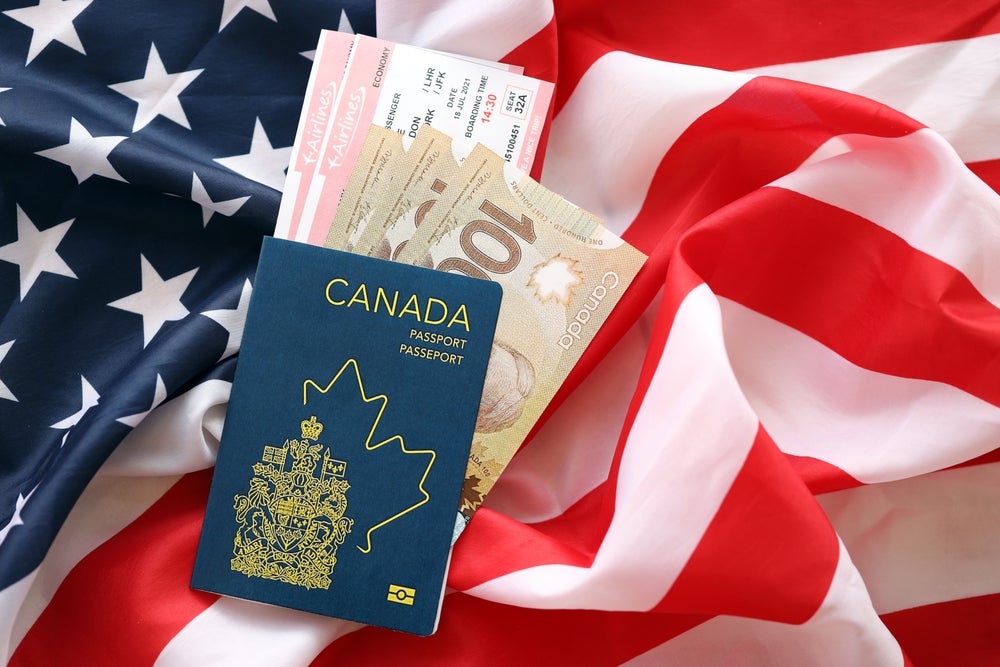
In March 2010, at the first VRL regional prepaid
conference in Dubai, delegates were left in no doubt that despite
the difficult economic circumstances of the past year, scope for
prepaid growth in the Middle Eastern region is one of the biggest
in the industry. John Hill reports.
 Dubai was the setting for
Dubai was the setting for
the first VRL regional prepaid conference, Prepaid Summit: Middle
East 2010. Present were over 150 attendees from banks, financial
institutions, telcos and vendors, as well as array of leading
prepaid industry speakers who gave their market-shaping insights on
one of the most dynamic areas of the payment industry.
How well do you really know your competitors?
Access the most comprehensive Company Profiles on the market, powered by GlobalData. Save hours of research. Gain competitive edge.

Thank you!
Your download email will arrive shortly
Not ready to buy yet? Download a free sample
We are confident about the unique quality of our Company Profiles. However, we want you to make the most beneficial decision for your business, so we offer a free sample that you can download by submitting the below form
By GlobalDataAround 65% of the Middle East
region’s population is under the age of 30 and in markets such as
Qatar and Bahrain, real GDP growth per year is in the double-digit
range, far outstripping GDP growth in other card markets. Massive
injections of capital and a bountiful supply of oil has helped
Saudi Arabia and the United Arab Emirates (UAE) to grow almost
unchecked, an effect that has been seen in rising personal and
consumer wealth in the region as well as helping to drive the
growth of the service and financial industry sectors.
Many of the discussions at the
conference revolved around the direction that prepaid could take in
the future, and which areas are the most likely avenues for its
progression. Altaf Ahmed, Emirates NBD vice-president, payment
services and CRM, explained how he saw the situation developing in
the Middle Eastern region.
“The recent economic boom in the
area has not helped prepaid very much in terms of banking
institutions, and in fact they have generally tried to push
conventional credit products because of their higher yields,” Ahmed
said.
“There has also not been a
regulatory push or support in terms of promoting prepaid and
government roles have been limited in this area.
“In terms of infrastructure and
capabilities most of the financial organisations in this region are
still lacking, systems in this area are not really geared up to
offer pure prepaid products and obviously the cost of adding and
upgrading that capability is an issue especially in this current
environment where there is such a focus on cost reduction.”
Ahmed also spoke of problems facing
card issuers in the region when it comes to marketing the cards
themselves.
“One of the biggest dilemmas for a
marketer of prepaid products is who exactly the target audience
is,” he said.
“Culturally this region has a lot
of high net worth customers as well as a lot of blue collar
workers, so it becomes difficult to define exactly who the intended
audience is.
“Would the high net worth customer
really use prepaid when he has access to so many other payment
instruments?”
Despite these issues, Ahmed thinks
financial institutions are now starting to come around to the idea
of using prepaid as a banking channel and a revenue stream,
especially in the current climate and with some of the highly
successful programmes in Europe and the US.
“Prepaid is currently being touted
as the next big thing by many industry experts, especially in the
last 12-18 months,” he said. “The reasons for this are also common
to many other parts of the world as well, including tighter credit
controls for example and this is going to continue for quite some
time so there is a space which has automatically been created for
prepaid.
“Banks are looking for new sources
of revenue, they are looking at increasing their fee income
streams, they are looking at reducing their dependence on interest
income and of course prepaid is based on fee income, so this a
natural fit for organisations looking to increase their other
sources of revenue.
“There is also an enormous
potential for product bundling which has not been explored
particularly well yet in this region, especially in areas of
insurance and remittances, and these again fit very nicely with
prepaid.”
Ahmed also explained how some of
the burgeoning industries in the region will benefit enormously
from prepaid.
“In terms of the macroeconomics of
the region there is a conscious push by the governments in that
area to reduce reliance on oil income in many countries,” he
said.
“This has then meant there is
increased focus on key sectors like tourism, travel and retail, all
of which have a great fit with prepaid products, so this is again a
great opportunity.”
 While many of the speakers presented a
While many of the speakers presented a
region-specific view of the current prepaid situation, Scott
Salmon, head of global market expansion for Visa, was on hand to
give a wider view of the industry. Speaking on the current
situation for prepaid globally he explained what he saw as the most
important market drivers.
“Prepaid products, are pre-funded
and don’t require the same level of qualification that credit and
debit cards require,” Salmon said. “The cost dynamics and the risk
dynamics of prepaid cards allow our issuers and partners to target
a lot of different types of opportunities they can’t necessarily
target with credit and debit alone.
“One of the defining
characteristics of prepaid cards is that it is really comprised of
a variety of different opportunities. Broadly speaking there are
prepaid cards that are provided direct to consumers and prepaid
cards that are provided to governmental and corporate
entities.”
Salmon also revealed that recent
figures obtained by Visa on the size of the potential global market
for prepaid put it in the trillions in terms of gross dollar
volume.
“If you look at that at the
broadest level for the last data period we have, the total global
personal consumption expenditure was just over $23 trillion and
that is things like cash and cheques and cards and other forms of
electronic payment,” he said.
“What is interesting about that is
if you look at the breakdown, over 40% of that $23 trillion is in
cash and cheque expenditure. Prepaid by its very nature is best
suited to replace cash and cheque spend, so what that tells us is
about $9.5 trillion of cash and cheque spend could potentially be
displaced using prepaid cards.”
“At Visa we conduct a global market
sizing assessment every few years to understand what the ‘cardable’
opportunity is for prepaid cards globally. Although the recent
round of research is still being finalised, it looks like the total
‘cardable’ opportunity for prepaid cards globally is multiple
trillions of dollars.”
With figures for prepaid growth in
some regions reaching over 300% annually, Salmon expounded on what
he saw as some of the major drivers for such a phenomenal
expansion.
“We have seen prepaid become our
fastest growing product for the last six years, in fact outside the
US our prepaid offerings have been growing in excess of 110%
annually,” he said.
“In fact in our CEMEA region in the
last three years prepaid volume has been growing at over 300%.
“So one of the questions that we
have is what’s been driving this significant growth in the prepaid
category and why has it been so stable and what we think is that
there are a variety of very significant global trends that are
driving the use of prepaid cards. As an example, globalisation of
the workforce is driving the use of prepaid cards for remittance
purposes, to send money home to families.
“The increasing buying power of the
youth is driving the use of prepaid cards to a segment of customers
that can’t necessarily qualify for debit or credit cards. Another
impetus for prepaid take-up is something you can certainly see
happening here in the UAE and that is the overall shift towards the
use of salary cards to disburse wages to employees.”
As the region continues a tradition
of conservative banking practices, Motaz Saeed, manager at Sharjah
Islamic Bank, spoke about how prepaid cards could be adopted in the
Islamic banking market. As no credit is extended on prepaid
products they are effectively Sharia-compliant banking products,
and some issuers are considering marketing them as such.
“We wanted some risk-free products,
where we weren’t worried about the outstanding balance, especially
with credit cards,” Motaz said.
“The write-offs at certain banks
have reached 10% or even higher. While we wanted new products to
reactivate and revive the shrinking card business, we didn’t want
to use credit cards because of the current market and we wanted a
product we could use until we saw what was going to happen with the
market.”
“That is also why we use prepaid to
boost card revenue streams, having said that the thing about
prepaid cards is that they don’t generate a lot of revenue,
something like 30-40% of what you might be earning revenue-wise on
a credit card.”
Saeed spoke of how Sharjah had been
using prepaid cards in cooperation with a local university (Sharjah
University) to entice younger customers into using the cards on a
daily basis by combining them with various identity features. He
also explained how Sharjah’s first prepaid card was surprisingly
well received on its launch.
“One of the main reasons was to use
the prepaid cards as leverage on the younger customers and then
move them on to other products as they get older,” Motaz said.
“We have a special relationship
with Sharjah University for exactly this purpose, they have around
8,000 students and they are all potential customers for our prepaid
cards. The concept of our first prepaid card the Jeans card was
highly unusual to an Islamic bank. It was something different and
something new. Despite this it was very well received in the
market.”
Volker Schloenvoigt, a manager at
Edgar Dunn & Company, took a slightly different tack on the
issue of prepaid card usage. He focused on the possibilities for
adoption of the payment method for e-commerce payments, as well as
addressing the e-commerce market as a whole.
“Our expectation is that roughly
$1.6 trillion will be turned over on e-commerce transactions by
2015, which is quite a big chunk,” said Schloenvoigt.
“No surprise that most of this
takes place in Europe, East Asia and North America. It is fair to
say that the size of the e-commerce market in the Middle East is
still reasonably small.
“There are reasons for this, but at
the same time we really expect this market to grow significantly
over the next five years. One of the main explanations for this is
the fact that when you look at the distribution of the population
in the Middle East you still have the proper pyramid, for example a
lot of young people that have grown up with technology and the
internet and are using mobile phones for transactions of various
types.
“This is also reflected in figures
for internet usage in the region, as it has seen the highest growth
in the world in the last 10 years. As credit cards are the most
popular method of paying online, any new or alternative method of
payment will have to compete with the credit card if it wants to
become successful.
“There are a number of issues that
will also need to be addressed.
“Security concerns are right on the
top of things and one of the advantages of prepaid cards is that
because the amount of money they can have loaded onto them is
limited, so is the potential security risk.”
Presenting the possibilities of
prepaid cards from an entirely different point of view to many of
the commercial card organisations present at the conference was
Massimo Cirasino, head of the payment, systems and development
group (PSDG) at the World Bank.
Cirasino addressed what he saw as
some of the biggest opportunities for prepaid growth globally as
well as areas in which building an infrastructure could lead to a
massive surge in prepaid take-up.
“If we compare Europe or other
developed areas like the US, Canada or Australia with other regions
we see that we are talking about 215 transactions per capita per
year as opposed to say 22 for central Asia,” Cirasino said.
“Then if we go down to Africa we
see that this falls to around two non-cash transactions per adult
per year.
“If we exclude South Africa from
sub-Saharan Africa in terms of transactions, the numbers are
astonishingly low. So we think there is a lot of room for
improvement there, and not all of this can be explained by the
income effect either. There are countries that have the same level
of income but have different behaviours in terms of non-cash retail
payment transactions.”
Cirasino also described what he saw
as cost inefficiencies in the remittance market, with possible
reductions of up to 90% for some areas.
“Most of the payments that are
performed globally are performed in cash and the cost of it is also
an element,” he said.
“Based on our estimates globally if
we take, for example, domestic payments we can look at improvements
in cost reduction of up to 90% if we look at the least and most
efficient systems in some of these countries. For remittance it is
even worse, we can talk about 20% of the cost to send $100 which
can go down to 5% or less.”
Cirasino’s PSDG also leads the
global remittances working group at the World Bank, which was
established last year. In many remittance corridors, the cost of
sending remittances is considered very high by the World Bank,
especially in relation to the low income of migrant workers and
their families. This is not the case in the UAE, which has one of
the most efficient remittance markets in terms of cost to the
user.
However, in some countries, particularly in Europe, the cost of
sending money home for expatriates is up to 30-40% of the value of
the amount sent. The reduction in the cost of remittances could
generate a net increase in income for migrants and their families
in the developing world of around $15bn per year, Cirasino
added.









